How Much Is a Gold Bar Worth?
02/08/2023Daniel Fisher
Free & fully insured UK Delivery. Learn more
Secure & flexible payments. Learn more

Buyback Guarantee Learn more
One of the questions we hear regularly, particularly from investors who are new in the gold business, is one touching on the worth of a gold bar. To answer this question comprehensively, we will explore all the factors that directly affect the value of a gold bar.
First, let’s outline what gold bars are worth today in terms of gold value. A quick disclaimer is that you wouldn’t fetch quite this high a price when it comes to selling as you need to account for the dealer’s buy/sell margin.
Before we begin, it is worth noting that all gold bars cannot cost the same. Even those with similar weight and size may not necessarily have the same value.
Also worth noting is that the price of gold bars keeps changing each day that markets are open in accordance with the gold spot price.
Since the gold bar is just a piece of precious metal, it makes sense for the going price of gold to determine its value. The gold spot price tells buyers about the market’s dollar value of one troy ounce of pure gold.
Visitors to our site can always see the latest spot price for gold and silver at the top left-hand side of our web pages or on our specialised live gold price page with interactive price chart.
It is important to keep in mind that the gold spot price varies from minute to minute when the market is open, and also after hours in the Asian markets. After knowing the latest spot price of gold, you should then proceed with the following steps to know the value of a gold bar.
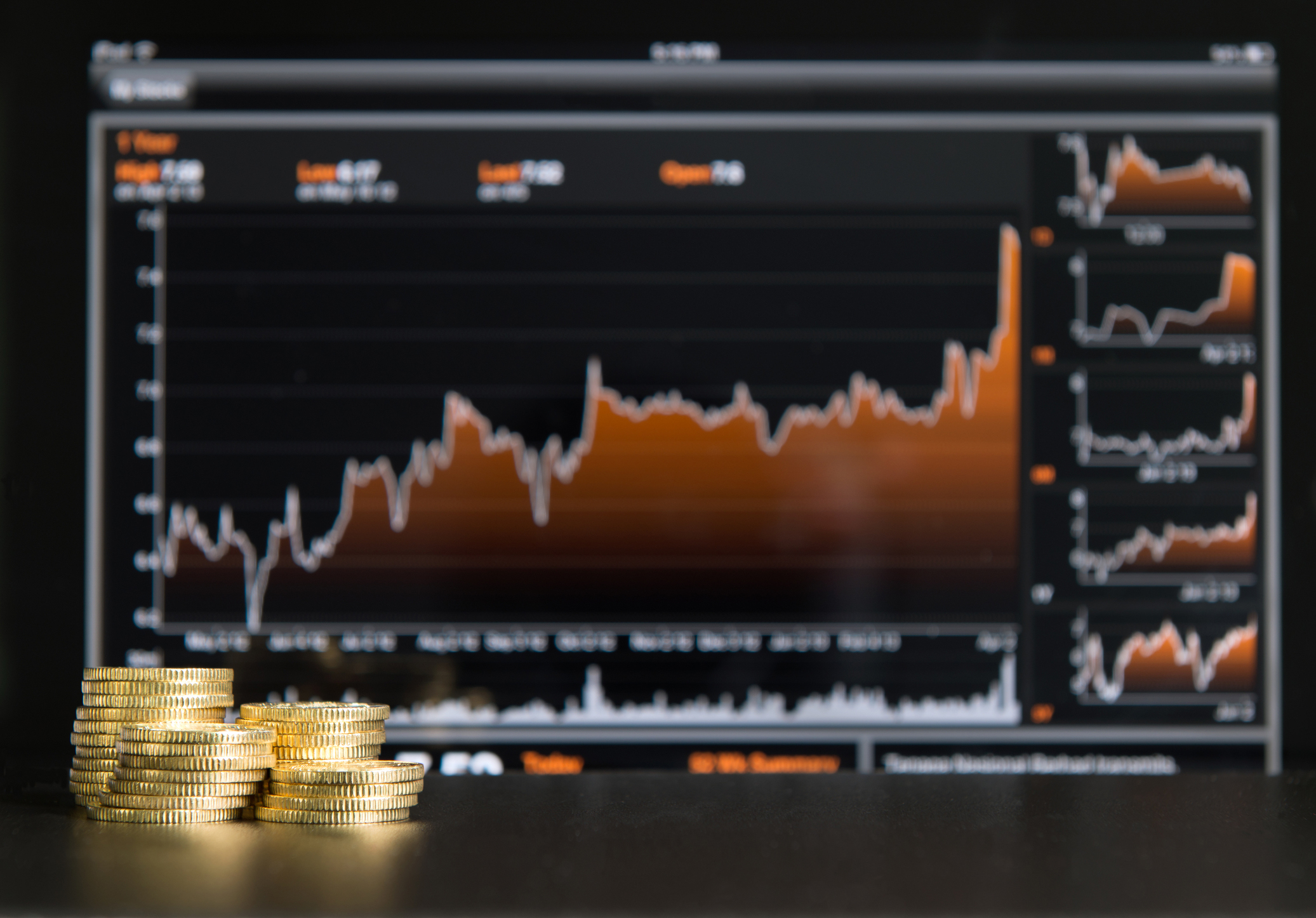
The price of gold bars continuously changes
After knowing the current price of gold, you should know more about the weight of the gold bar. Typically, manufacturers stamp purity and weight details somewhere on the gold bar – either at the back or front.
For the most part, gold bars are either .9999 or .999 pure albeit some brands may be .995 pure. If a buyer comes across a gold bar devoid of this information, it might not be real gold. Copper and bronze are common alloy metals that resemble gold in appearance.
On the other hand, gold bar weights vary dramatically from about one gram to 1 kilogram, with commercial ‘good delivery’ bars weighing in at a huge 12.5KG. So, the size clearly affects the pricing as well.
After knowing the current price of gold, you should know more about the weight of the gold bar. Typically, manufacturers stamp purity and weight details somewhere on the gold bar – either at the back or front.
For the most part, gold bars are either .9999 or .999 pure albeit some brands may be .995 pure. If a buyer comes across a gold bar devoid of this information, it might not be real gold. Copper and bronze are common alloy metals that resemble gold in appearance.
On the other hand, gold bar weights vary dramatically from about one gram to 1 kilogram, with commercial ‘good delivery’ bars weighing in at a huge 12.5KG. So, the size clearly affects the pricing as well.
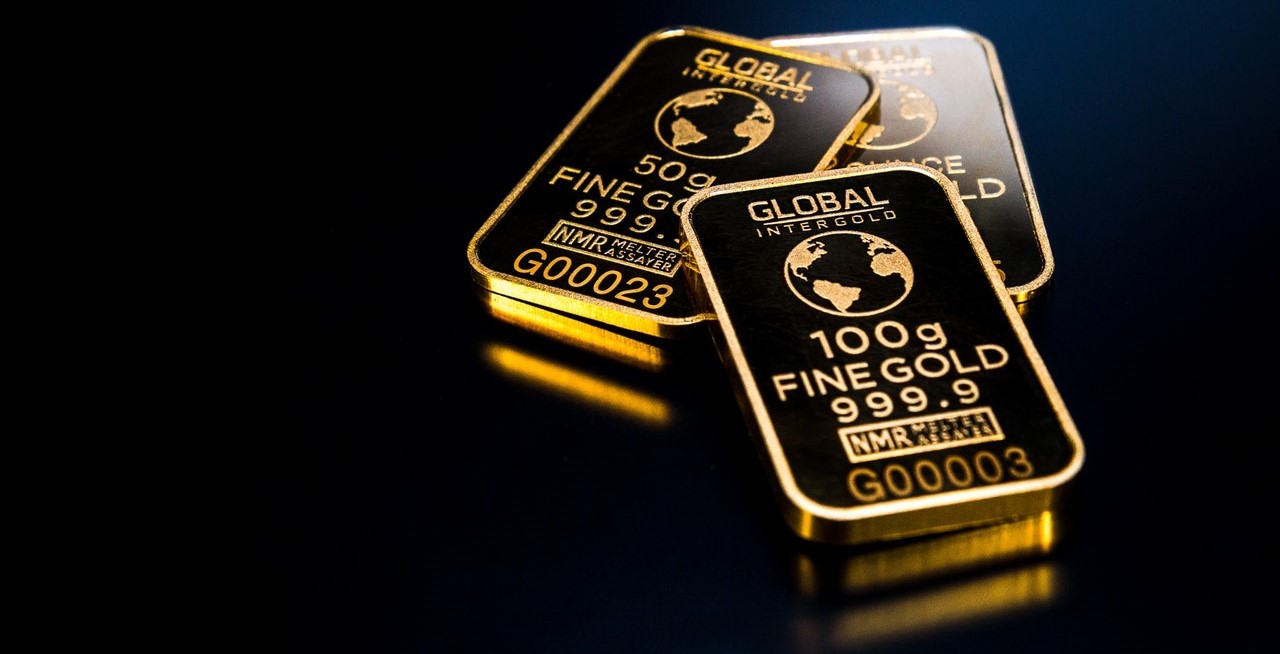
Gold bars have a melt value
A premium refers to the price added to the melt value of the gold bar. Calculation of the premium depends on many factors. Often, the demand and cost of production are the main reasons a gold bar may sell high and above the spot price.
Premiums may vary depending on the gold bar’s weight, manufacturer or condition. It is usually indicated as a dollar value or percentage. Typically, the percentage premium will reduce as the gold bar’s weight increases.
When buying gold bars, the cost can absolutely vary according to which brand bars you purchase. Brands such as Umicore tend to be priced slightly lower than Swiss brands such as Pamp, which command a ‘Swiss’ premium.
However, the importance of brand diminishes when you look to sell. Certainly, we’d pay the same for a gold bar regardless of its brand. We simply base our price on the gold price, weight and purity.
So buy the cheapest bar possible unless you especially want a Swiss brand for ego, prestige, or as a present. Its value will be the same when it comes to selling.
We sell pre-owned gold bars amongst our best sellers, to savvy investors who realise a brand shouldn’t impact a gold bar’s worth.
If you’re interested in gold as an investment, then there are two main types of physical gold; Gold coins and gold bars.
As long as these forms of gold are at least 22 carats in purity, then both are exempt from VAT as they become classified as ‘investment grade’ gold. Other types of gold, like jewellery, gold dust, lower purity coins, etc, will attract VAT and so are less attractive as effective investments.
Generally speaking, your gold bar will not be worth quite the same as the equivalent weight in gold coins. The value of both tracks the various factors already discussed. However, gold dealers will likely pay you very slightly more for desirable bullion coins such as Sovereigns than an equivalent weight gold bar.
This reflects that the British coins are Capital Gains tax-free and can be sold to a number of potential buyers due to their modest size.
Certainly, larger gold bars will usually be sold back into wholesale, so premiums are slightly lower to reflect that. We’re not talking a big difference, but perhaps a percent or so, depending on the market.
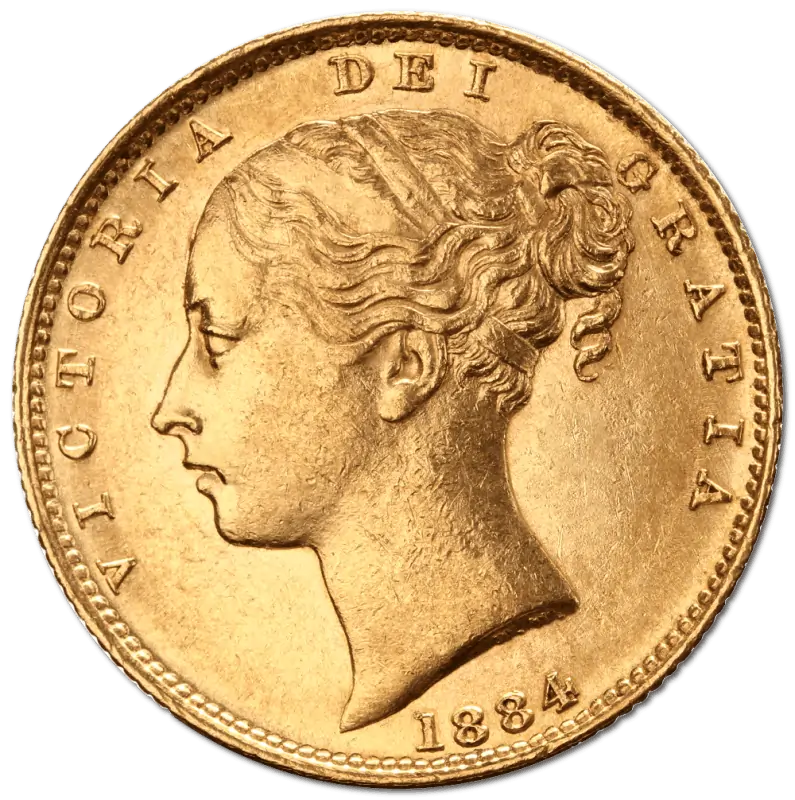
The bigger discrepancy will be when comparing the value of a gold bar with the equivalent weight in a more numismatic coin. If you look at the value of a Victorian gold Sovereign, for example, its worth is not only based on its gold content but also its age, scarcity and desirability. For that reason, the value of a gold bar will always be lower per gram.
The value of gold bars will never outpace the general gold price as they don’t contain a historical or collectable value. However, gold bars would have been cheaper to buy in the first place.
Gold bars are not the same value as gold coins per gram.
Obviously, the underlying gold price affects the value of gold bars, as covered in point one above. But other timing issues can impact the value of your gold bar.
Firstly, the general market sentiment and supply/demand dynamic can impact the value of gold bars. That’s because the premium or discount to the spot price can vary according to how busy the market is. When the gold price rises, demand for gold increases and the number of sellers reduces. In this scenario, premiums to buy gold bars can increase to reflect the robust demand and prices paid to buy back gold also increases.
The opposite is true when the gold price is in a period of downside. Fewer buyers mean that gold bars may be snapped up at slightly lower premiums (some online gold dealers may have sales on), while dealers may pay a percent less for your gold bar if you’re selling as there are more sellers.
To maximize your gold bar’s value, buy when the market is quiet (and low) and sell when the market is on fire (even though everyone will think you’re mad!).
Secondly, the value of your gold wafer or bar can be based on either the live gold price or one of the two daily fixings. This may sound like a moot point, but it’s important to understand that on a volatile day, perhaps when important economic figures are released or interest rates increase, the price can vary greatly from morning to afternoon.
So if you’re seeking to sell your gold bar, make sure you agree if you’re basing it off the live price, the morning fix (10.30am) or the afternoon fix (3 pm), as this can greatly impact your bar’s worth.
While UK coins issued with a face value, such as Britannias and Sovereign coins, are Capital Gains tax free, gold bars are not. That means the value of your gold bar could be impacted by the tax.
Obviously, if you sell your gold bar below the price you paid, then CGT will not impact its worth. Similarly, if your gold bar has risen in value, but by not more than the annual CGT threshold (around £6k per annum, but falling to just £3k in 2024), then no tax is applicable, and the bullion’s value is straightforward.
However, for the larger investor, selling a considerable amount of bars at once, at a profit exceeding your annual allowance, will incur tax, reducing the overall sale value of your gold bar.
One way around this for sellers of larger quantities ofgold bars is to sell some bars before the April 5th tax year and others after the tax year.
Spreading profits over two years, and ensuring gains are below annual allowances will mean no tax.
This strengthens the argument for buying lots of medium-sized bars instead of very large bars which may incur CGT. With the UK CGT tax-free allowance halving in 2023 with a further 50% reduction in 2024, this will become less viable.
The price for physical gold will generally reduce as you buy more. In the case of gold bars, if you calculate the price per gram, larger bars are far better value than small gold bars.
In fact any gold bars below an ounce in weight are really not great value due to the high relative production cost. Most new small bars will be beautifully manufactured to include being encapsulated in a plastic cover, complete with certification.
In comparison, similar sizegold bullion coins,Sovereigns (7.32g of pure gold) andBritannias , can be bought at lower premiums as they’re sold loose. 100g gold bars offer decent value, with 250g and 500g being slightly better valued, and 1kg trading pretty close to the underlying spot price.
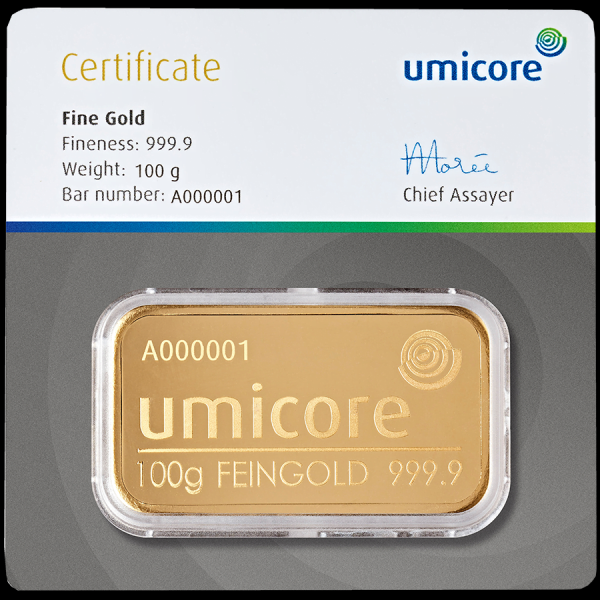
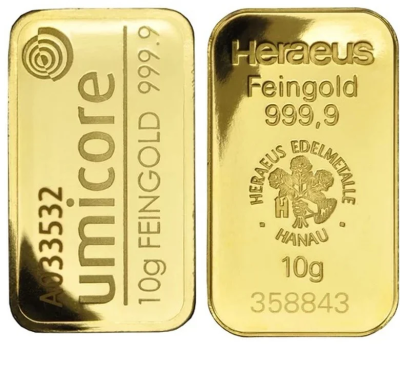
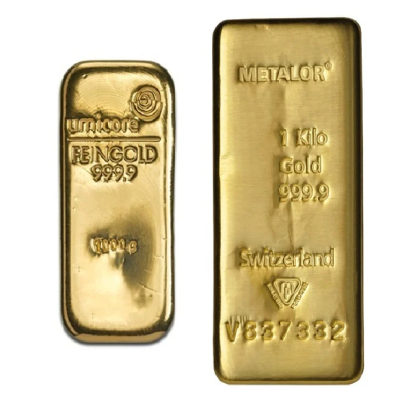
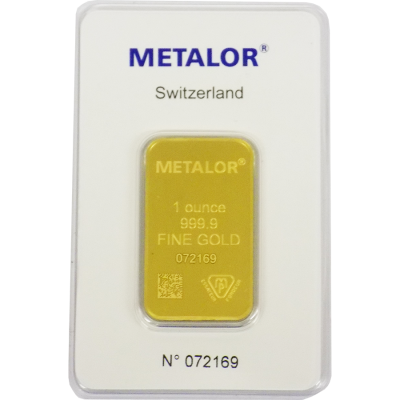
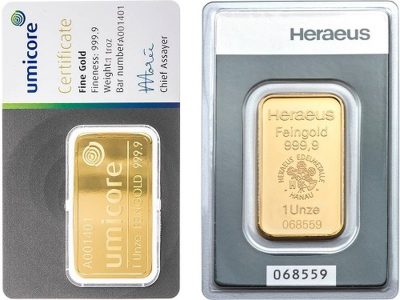
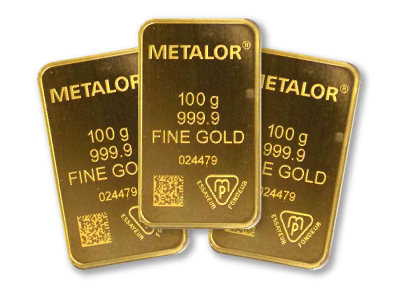
The problems with 1kg gold bars are that many people can’t afford to invest £50k+ into gold at once and secondly, it limits flexibility. After all, if you buy a 1kilo gold bar to reduce the cost as much as possible, you can’t liquidate £10k worth of gold if you need to. You’re forced to sell the whole bar or nothing at all.
An alternative method to buy gold bullion at the best value is to approach quantity discounts in another way, depending on how much you have to spend. While 1kilo bars undoubtedly offer the best value, discounts are still available for buying a quantity of more modest-sized gold bars.
Instead of buying one 1 kg gold bar , it could provide a good compromise to buy 10 x 100g bars instead. Buying ten 100g gold bars at once will enable you to receive a discount (although not quite as cheap as 1 x 1kilo bar), but still maintain a degree of divisibility so you can sell some of your holdings if needed.
As we stand on the cusp of the final quarter of 2023, casting our gaze towards 2024, the gold price forecasts paint a picture of cautious optimism. While some predictions are more bullish than others, a common thread weaves through them all – none foresee a significant tumble in gold’s value.
The World Bank, in its long-term gold price forecast as of April 2023, envisions the year wrapping up with gold prices at $1,900 per ounce. The current exchange rate of 1 GBP to 1.28557 USD from Xe.com translates to approximately £1,477.50 per ounce. If you’re eyeing a 1kg gold bar, this would peg its value at around £47,500 before adding the premium (usually between 3-5%).
Angel One’s analysis offers a slightly more optimistic outlook. They predict that by the next Akshay Tritiya in May 2024, the price of 24-carat gold could touch Rs 68,000 per 10 grams. This implies an average price of $1,950 per ounce, or around £1,515.50, for Q4 2023. In this scenario, a 1kg gold bar would be worth approximately £48,800 pre-premium.
Meanwhile, Long Forecast anticipates a bit of a roller coaster ride for gold prices in Q4 2023. They expect prices to fluctuate between $1,814 and $2,061 per ounce, with an average of $1,963 per ounce, or roughly £1,526.50. This would place a 1kg gold bar at about £49,200 pre-premium.
Taking a step back to look at the bigger picture, it’s clear that gold prices are expected to hold their ground in Q4 2023 and throughout 2024, despite some volatility and divergence among different sources.
The key factors steering the gold price will be the US Federal Reserve’s monetary policy, the strength of the US dollar, and the global economic recovery from the pandemic.
Now that you know how to determine the value of a gold bar, why not contact Physical Gold to buy gold bars (or even silver bars ) of the weight you want? You can call us on 020 7060 9992 or email us through our contact page, and we will gladly serve you.
Live Gold Spot Price in Sterling. Gold is one of the densest of all metals. It is a good conductor of heat and electricity. It is also soft and the most malleable and ductile of the elements; an ounce (31.1 grams; gold is weighed in troy ounces) can be beaten out to 187 square feet (about 17 square metres) in extremely thin sheets called gold leaf.
Live Silver Spot Price in Sterling. Silver (Ag), chemical element, a white lustrous metal valued for its decorative beauty and electrical conductivity. Silver is located in Group 11 (Ib) and Period 5 of the periodic table, between copper (Period 4) and gold (Period 6), and its physical and chemical properties are intermediate between those two metals.